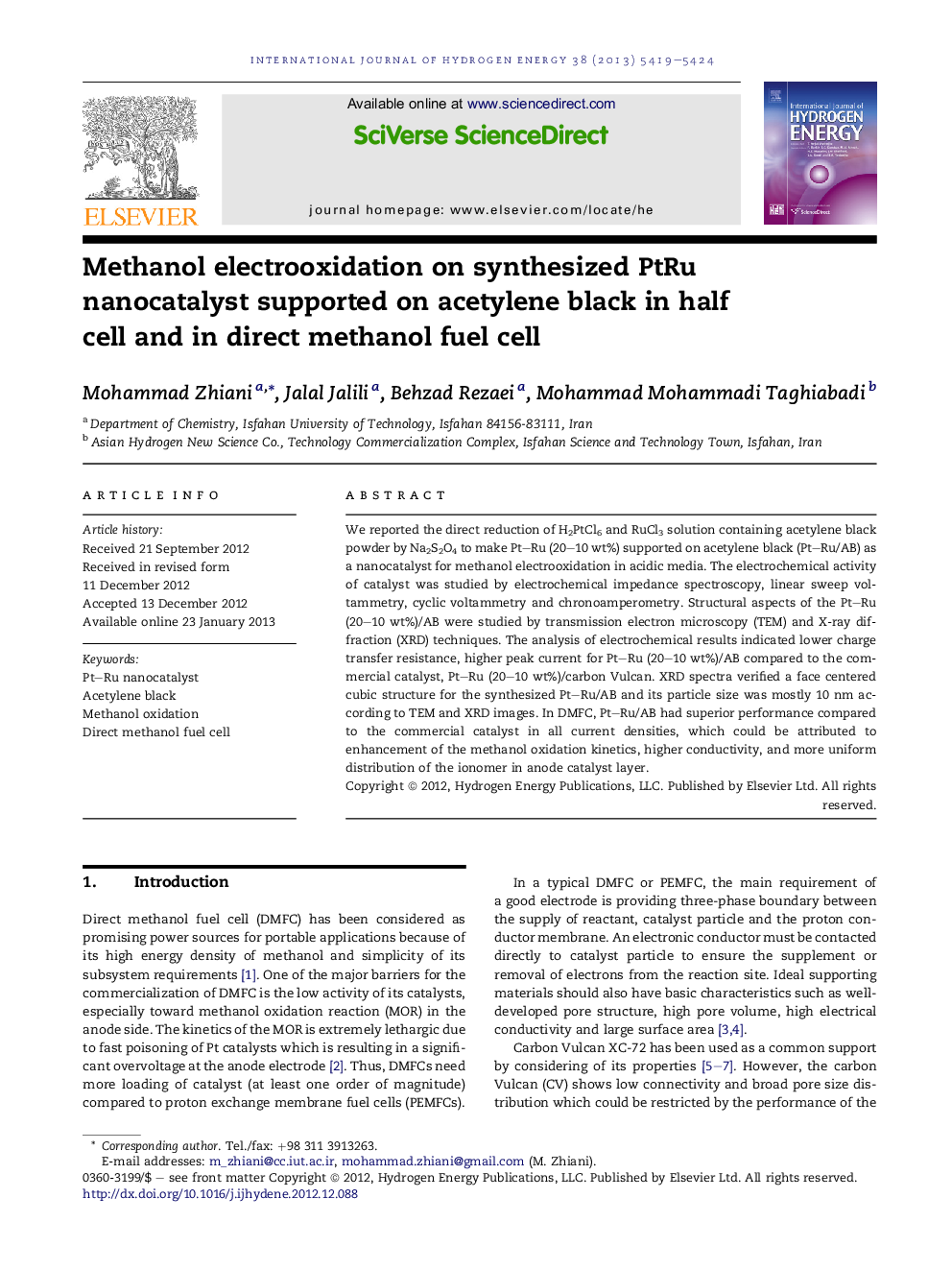| Article ID | Journal | Published Year | Pages | File Type |
|---|---|---|---|---|
| 1277731 | International Journal of Hydrogen Energy | 2013 | 6 Pages |
We reported the direct reduction of H2PtCl6 and RuCl3 solution containing acetylene black powder by Na2S2O4 to make Pt–Ru (20–10 wt%) supported on acetylene black (Pt–Ru/AB) as a nanocatalyst for methanol electrooxidation in acidic media. The electrochemical activity of catalyst was studied by electrochemical impedance spectroscopy, linear sweep voltammetry, cyclic voltammetry and chronoamperometry. Structural aspects of the Pt–Ru (20–10 wt%)/AB were studied by transmission electron microscopy (TEM) and X-ray diffraction (XRD) techniques. The analysis of electrochemical results indicated lower charge transfer resistance, higher peak current for Pt–Ru (20–10 wt%)/AB compared to the commercial catalyst, Pt–Ru (20–10 wt%)/carbon Vulcan. XRD spectra verified a face centered cubic structure for the synthesized Pt–Ru/AB and its particle size was mostly 10 nm according to TEM and XRD images. In DMFC, Pt–Ru/AB had superior performance compared to the commercial catalyst in all current densities, which could be attributed to enhancement of the methanol oxidation kinetics, higher conductivity, and more uniform distribution of the ionomer in anode catalyst layer.
► Using acetylene black (AB) as support of PtRu in methanol oxidation reaction. ► PtRu/AB has face center cubic structure with bigger particle size of catalyst. ► Enhancement of MOR kinetics by PtRu/AB compare to commercial PtRu/CV. ► Pt–Ru/AB demonstrated higher performance than PtRu/CV in DMFC.
